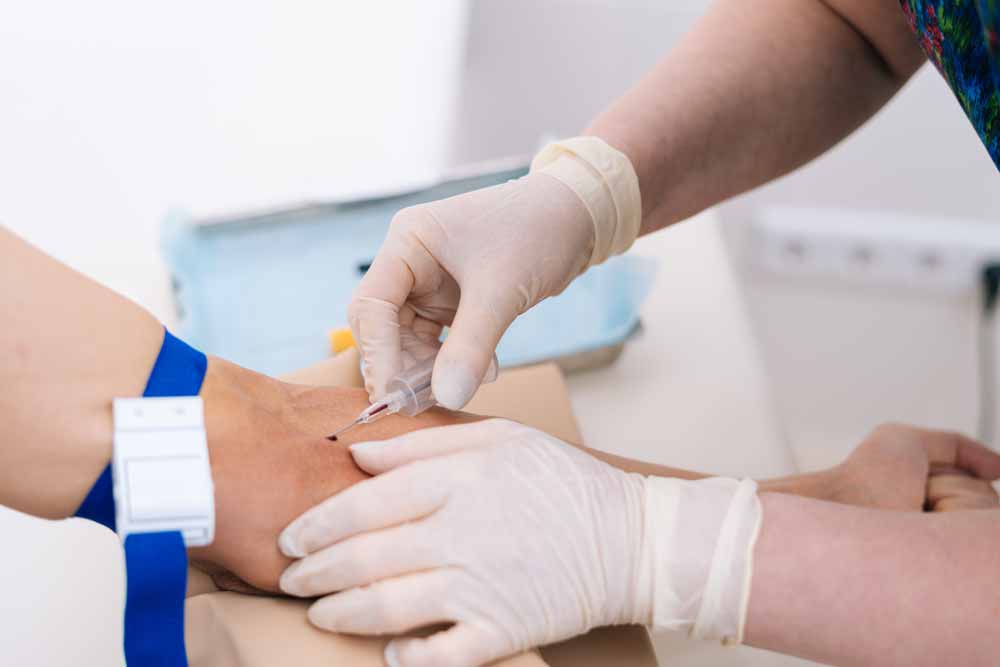ABCD2 Score System for stroke risk assessment after suspected TIA, online calculator

ABCD2 Score System estimates the risk of stroke after a suspected transient ischemic attack (TIA). The ABCD2 score can help physicians to provide risk stratification stroke in patients presenting with a TIA. Patients with a low risk of stroke could undergo outpatient diagnostic tests. Patients with moderate and high risk should be hospitalized for careful diagnosis.
No
Yes
No
Yes
Unilateral weakness
Speech disturbance without weakness
Other symptoms
<10 minutes
10-59 minutes
≥ 60 minutes
Yes
No
| Patient’s score | Range | Risk group | Stroke Risk | Recommendation |
|---|---|---|---|---|
| 0 | 0 | 0 | 0 | 0 |
The addition of the selected points is required.
| Criteria | Value | Points |
| Age ≥ 60 years | Y/N | +1 |
| BP ≥ 140/90 mmHg | Y/N | +1 |
| Clinical features of the TIA | Unilateral Wwakness | +2 |
| Speech disturbance without weakness | +1 | |
| Other symptoms | 0 | |
| Duration of symptoms | < 10 minutes | 0 |
| 10-59 minutes | +1 | |
| ≥ 60 minutes | +2 | |
| History of diabetes | Y/N | +1 |
Multiple studies have shown that as the ABCD2 score increases the risk of a subsequent stroke also increases.
Results:
| Total score | Risk group | Stroke Risk | Recommendation |
| 0-3 | Low Risk | • 2-Day Stroke Risk: 1.0% • 7-Day Stroke Risk: 1.2% • 90-Day Stroke Risk: 3.1% | • Arrange expedited evaluation as an outpatient with the goal of obtaining the relevant studies and consultations within 24 hours. • Consider further imaging modalities including MRI and carotid ultrasound as outpatient. • Consider consulting Neurology to help determine whether the patient would benefit from further inpatient evaluation or to expedite outpatient follow-up when appropriate. |
| 4-5 | Moderate Risk | • 2-Day Stroke Risk: 4.1% • 7-Day Stroke Risk: 5.9% • 90-Day Stroke Risk: 9.8% | • Admit patient for further evaluation to the hospital. • Consult Neurology. • Consider obtaining an MRI and other appropriate vascular and embolic imaging. |
| 6-7 | High Risk | • 2-Day Stroke Risk: 8.1% • 7-Day Stroke Risk: 11.7% • 90-Day Stroke Risk: 17.8% | • Admit patient for further evaluation to the hospital. • Consult Neurology. • Consider obtaining an MRI and other appropriate vascular and embolic imaging. |
- A prospective observational study of 637 patients presenting to the ED found that the ABCD2 score did not add incremental value beyond an ED evaluation that included central nervous system and carotid artery imaging in the ability to risk-stratify patients with transient ischemic attack in the study’s cohort. (Stead 2010)
- In this population of patients with TIA patients, a rapid ED-based outpatient protocol that included early carotid imaging and treatment when appropriate, found that the rate of stroke was independent of ABCD2 risk stratification. (Stead 2010)
Limitations:
The ABCD2 score should not be used as a substitute for clinical judgement or decision making. The ABCD score was developed in an outpatient setting (not in emergency departments!). It has been shown to have lower accuracy when ABCD2 score used by non-specialists (primary care or emergency physicians).
Patients with a low baseline risk of stroke (≤ 2%) with a low ABCD2 score (0-2) are at low risk for having a stroke within the next 7 days (0.4-0.8%). In this population of patients with TIA patients, rapid emergency department-based outpatient diagnostic tests are recommended.
In centers where computed tomography and carotid ultrasound studies are performed in collaboration with a stroke service, adding assessment based on the ABCD2 score to the evaluation appears unnecessary.
Based on the the poor performance of the ABCD2 score system in the emergency department setting, combined with difficulties in arranging the necessary imaging and specialty follow-up within 24-hour window, that most emergency department physicians were likely to choose to perform a rapid evaluation of TIA patients (imaging, possible neurology consultation) regardless of the ABCD2 score.
Literature
Johnston SC, Rothwell PM, Nguyen-Huynh MN, Giles MF, Elkins JS, Bernstein AL, Sidney S. Validation and refinement of scores to predict very early stroke risk after transient ischaemic attack. Lancet. 2007 Jan 27;369(9558):283-92. https://pubmed.ncbi.nlm.nih.gov/17258668/
Josephson SA, Sidney S, Pham TN, Bernstein AL, Johnston SC. Higher ABCD2 score predicts patients most likely to have true transient ischemic attack. Stroke. 2008 Nov;39(11):3096-8. doi: 10.1161/STROKEAHA.108.514562. Epub 2008 Aug 7. https://pubmed.ncbi.nlm.nih.gov/18688003/
Rothwell PM, Giles MF, Flossmann E, Lovelock CE, Redgrave JN, Warlow CP, Mehta Z. A simple score (ABCD) to identify individuals at high early risk of stroke after transient ischaemic attack. Lancet. 2005 Jul 2-8;366(9479):29-36. https://pubmed.ncbi.nlm.nih.gov/15993230/
Sanders LM, Srikanth VK, Blacker DJ, Jolley DJ, Cooper KA, Phan TG.Performance of the ABCD2 score for stroke risk post TIA: meta-analysis and probability modeling. Neurology. 2012 Sep 4;79(10):971-80. doi: 10.1212/WNL.0b013e31825f9d02. Epub 2012 Jun 13. PubMed PMID: 22700810. https://pubmed.ncbi.nlm.nih.gov/22700810/
Stead LG, Suravaram S, Bellolio MF, Enduri S, Rabinstein A, Gilmore RM, Bhagra A, Manivannan V, Decker WW. An assessment of the incremental value of the ABCD2 score in the emergency department evaluation of transient ischemic attack. Ann Emerg Med. 2011 Jan;57(1):46-51. doi: 10.1016/j.annemergmed.2010.07.001. Epub 2010 Sep 19. PubMed PMID: 20855130. https://pubmed.ncbi.nlm.nih.gov/20855130/
Perry JJ, Sharma M, Sivilotti ML, Sutherland J, Symington C, Worster A, Émond M, Stotts G, Jin AY, Oczkowski WJ, Sahlas DJ, Murray HE, MacKey A, Verreault S, Wells GA, Stiell IG. Prospective validation of the ABCD2 score for patients in the emergency department with transient ischemic attack. CMAJ. 2011 Jul 12;183(10):1137-45. doi: 10.1503/cmaj.101668. Epub 2011 Jun 6. PubMed PMID: 21646462. https://pubmed.ncbi.nlm.nih.gov/21646462/
Register on our website right now to have access to more learning materials!
ClinCaseQuest Featured in SchoolAndCollegeListings Directory
Exciting News Alert! We are thrilled to announce that ClinCaseQuest has been successfully added to…
We presented our experience at AMEE 2023
AMEE 2023 took place from 26-30 August 2023 at the Scottish Event Campus (SEC), Glasgow,…
We are on HealthySimulation – world’s premier Healthcare Simulation resource website
We are thrilled to announce that our Simulation Training Platform “ClinCaseQuest” has been featured on…
Baseline Cardiovascular Risk Assessment in Cancer Patients Scheduled to Receive Cardiotoxic Cancer Therapies (Anthracycline Chemotherapy) – Online Calculator
Baseline cardiovascular risk assessment in cancer patients scheduled to receive cardiotoxic cancer therapies (Anthracycline Chemotherapy)…
National Institutes of Health Stroke Scale (NIHSS) – Online calculator
The National Institutes of Health Stroke Scale (NIHSS) is a scale designed to assess the…
SESAM 2023 Annual Conference
We are at SESAM 2023 with oral presentation “Stage Debriefing in Simulation Training in Medical…











